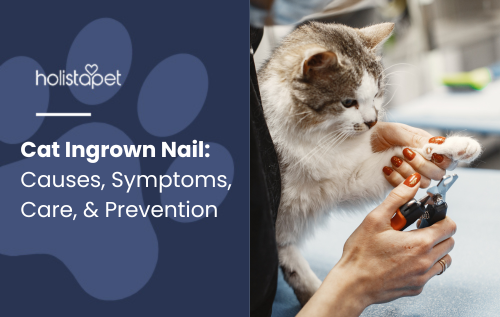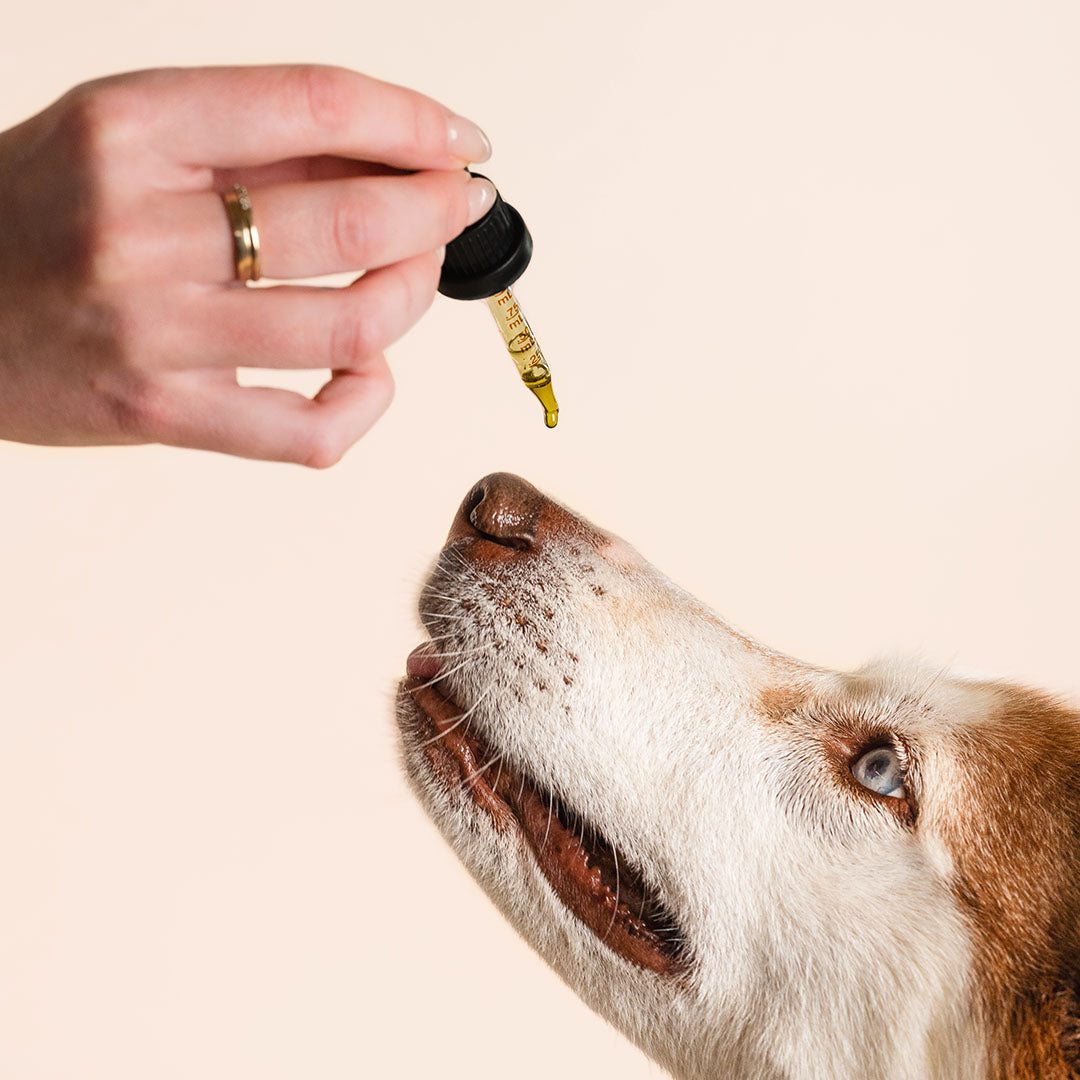Cats and dogs can live together, but only if boundaries are respected and aggression is avoided. But what if one pet is scared of another? Knowing how to introduce a scared cat to a dog without causing chaos is essential for long-lasting peace.
So, how can you tell if your cat is frightened of dogs? There are actually many ways, for instance, cats have over 20 muscles just in their ears, which they use to show how they feel. That's a lot of signals to read during introductions, plus there are plenty of other body language signals.
If your cat hides or freezes when they hear a bark, don't worry. We’ve made each step easy to follow so you don’t miss a thing. Keep reading to help both pets feel calm, safe, and ready to be new roommates.
Why Are Some Cats Scared of Dogs?

Cats prefer calm behavior, quiet spaces, and moving at their own pace. A loud, bouncy new dog can feel like too much, especially if the dog charges in, gets too close, or stares too hard. These strong prey-like actions, like barking or chasing, trigger a cat’s instinct to hide or flee.
Even a shy cat can adjust with time, but only if they feel safe. Watch for flattened ears, tail flicks, or wide eyes. If a cat hides in their litter box or bolts to a tall cat tree, it’s a clear sign they need space.
Why a Gentle Introduction Matters
The introduction process sets the tone for everything that follows. If a scared cat meets an overly excited dog too fast, chaos happens. Cats and dogs need time, space, and a solid door between them at first. Let both the cat and the new dog adjust at their own pace for extra safety and better results.
Understanding Cat Behavior and Fear Triggers
Cats pick up on the smallest sounds and movements. A loud bark or quick step can spook even a confident cat. Watch cat body language for signs of worry like crouching, wide eyes, or hiding under cat shelves. A shy cat may need their own cat room and litter box far from the new animal at first. These small steps help the cat feel secure.
Natural Predatory Instincts in Dogs
Dogs love to chase. That's part of their strong prey drive, which can make things tricky with cats. Even one dog with a friendly tail wag can trigger fear if they rush toward a cat's space. Keep the dog's leash on during early meetings and limit eye contact. This helps both animals stay calm during those first few sessions.
Common Problems When Introducing Cats to Dogs
Bringing pets together can feel like a game of guess-and-check. Some issues pop up fast, like:
-
The dog tries to sniff or chase too soon
-
The cat won't leave their tall cat tree
-
Growling, hissing, or hiding in the litter box
-
The puppy barks every time the cat walks by
These bumps are normal. Short training sessions and keeping the door closed during breaks help both animals feel less overwhelmed.
Preparing the Space for a Smooth Introduction

Before you bring the dog and cat face to face, set the stage for success. A peaceful setup helps prevent nervous behaviors and avoids chaos from the start. Now, let's look at how to prep your home for the big meet-and-sniff moment.
Create a Safe, Dog-Free Zone for the Cat
Your cat needs a space to feel secure while adjusting to the new pet. Choose a cat-friendly room with a solid door where your cat can eat calmly, rest, and hide if needed. Include a litter box, soft bedding, and a tall cat tree or cat shelves. This space should be free of the dog's scent at first, so the cat's room feels like a safe zone during the initial introduction process.
Use Barriers or Baby Gates for Initial Separation
Keep the first few meetings short and low-pressure by using barriers like a pet gate or baby gate. This lets both the cat and dog sniff each other from opposite sides without full contact. Barriers allow the animals to hear and smell the other's presence while giving them space to back away if they feel threatened. Use this time to read each pet's body language and adjust sessions as needed.
Calming Fear and Nervousness in Cats and Dogs
Cats and dogs feel more confident when their space feels safe, and their body is relaxed. Helping pets stay calm makes it easier to build trust and reduce tension during the early stages of a new animal introduction. These tips may ease upset behaviors and help both animals adjust faster.
- Set the Mood With a Calm Environment. Use soft lighting and keep loud noises to a minimum. Avoid sudden movements. This gives both the cat and dog time to settle into their new surroundings without feeling overwhelmed.
- Try HolistaPet CBD Cat Treats. Our grain-free, salmon-flavored crunchy bites and soft chews are a tasty way to support calm behavior in your cat. Made with natural ingredients, they may promote positive moods, help your cat relax, and may even reduce nervous or fearful behaviors during stressful moments.. Cats love the flavor, and you'll love the peace.
- Watch for Positive Body Language. Relaxed ears, soft eyes, and slow tail movements often show that pets are adjusting. If either pet seems stiff or tense, take a step back and give them more space and time to reset.
Step-by-Step: How to Introduce a Scared Cat to a Dog

Learning how to introduce a scared cat to a dog is all about patience and timing. One wrong move can spook your cat or get your dog too excited. Follow each step closely to help both pets stay calm and confident.
Let Them Get Used to Each Other's Scent First
Before anything else, start with scent sharing. Rub a soft towel on the cat and place it near the new dog. Do the same with the dog and put it near the cat's room. This helps both the cat and dog learn the other's scent without meeting face to face. It's a simple first step that builds comfort.
Begin With Visual Introductions Only
Once scent swapping goes well, let the cat and dog see each other through a pet gate or solid screen. Keep the dog's leash on and sessions short. Make sure the cat has a tall cat tree or shelves nearby for comfort. Stay close and reward calm behavior from both the dog and the cat.
Controlled, Leashed Dog Interactions
With calm visual meetings under your belt, allow the dog and cat to meet in the same space. Keep the dog's leash on at all times and let the cat move freely. Always supervise closely and offer treats when both pets stay calm during training sessions or shared time.
Gradually Increase Monitored Exposure Over Time
As each animal adjusts, slowly let them spend more time together in shared areas. Watch their body language and give breaks if anyone feels stressed. Make sure your cat still has an escape route, and keep the door closed when you're not in the room. Small steps bring lasting results.
Reinforcing Calm, Friendly Behavior
Once the dog and cat feel safe in the same space, it's time to build on that good behavior. Small wins add up fast when you reward calm actions and move at the cat's pace. These easy tips help you keep things stress-free.
- Use Treats to Reward Positive Reactions. Keep high-value treats nearby during training sessions. If the cat stays relaxed or the dog looks away calmly, reward right away. This teaches both pets that calm behavior gets rewards.
- Keep Sessions Short and End on a Calm Note. Stop the session while both animals still feel chill. Five to ten minutes is perfect. Ending with a relaxed vibe helps the next meeting feel safer.
- Don't Force Interaction—Go at the Cat's Pace. Let the cat choose when to move forward. If they hang out near a tall cat tree or stay in their cat room, that's fine. The goal is comfort, not speed.
Recognizing Signs of Fear or Stress
Understanding body language helps you know when to slow things down. If either pet feels upset, that's your sign to pause and reset. Look for early warning signs to prevent bigger problems. Early intervention is best to keep the introduction process smooth and safe for both pets.
Cats – Recognizing Signs of Fear or Stress
-
Hiding or avoiding interaction
-
Flattened ears
-
Dilated pupils
-
Twitching tail or flicking
-
Sudden aggression or hissing
-
Excessive grooming
-
Freezing in place
-
Low body posture
-
Loss of appetite
-
Sudden litter box avoidance
-
fear-based aggression
Dogs – Recognizing Signs of Fear or Stress
-
Tucked tail
-
Ears pinned back
-
Lip licking or yawning
-
Shaking or trembling
-
Panting excessively
-
Avoiding eye contact
-
Pacing or restlessness
-
Whining or barking
-
Cowering or hiding
-
Refusing food or treats
-
fear-based aggression
Tips for Long-Term Peace Between Cats and Dogs

Once the cat and dog get used to sharing space, it's all about keeping the peace. A few smart setups and daily habits go a long way. These tips help both pets feel comfortable and safe under one roof.
- Separate Resources: Litter, Food, Beds. Make sure each animal has their own food and sleeping spots. Keep the litter box in a quiet, cat-friendly zone where the dog can't reach it. This helps avoid tension during daily routines.
- Provide Vertical Escape Spaces for Cats. Cat shelves or a tall cat tree give cats the option to get away and observe. They feel more confident when they can escape up high if needed. This helps with nervous behavior and keeps things peaceful.
- Encourage Calm, Joint Activities Over Time. Over time, try calm hangouts like supervised couch time or relaxed play. Give treats when both pets act chill around each other. These shared moments build trust without pressure.
Final Thoughts on Introducing Scared Cats to Dogs
Every cat and dog brings their own quirks and energy to the mix. Taking your time and following the right steps makes a big difference. From first sniffs to full-on nap buddies, the process works best with patience, routine, and rewards.
For extra help, HolistaPet offers soothing CBD cat treats and calming chews that support peace at every stage. With a little effort (and a few tasty snacks), your home can be a calm place for all your pets to thrive.
Protect Your Cat’s Peace—Cat Care Tips







![Probiotics For Dogs [Soft Chews] - HolistaPet](http://www.holistapet.com/cdn/shop/files/Probiotic-Infographic-1_472d7a29-e30c-435a-9638-1365d8c3a9f9.jpg?v=1725384841&width=104)



























Leave a comment
All comments are moderated before being published.
This site is protected by hCaptcha and the hCaptcha Privacy Policy and Terms of Service apply.